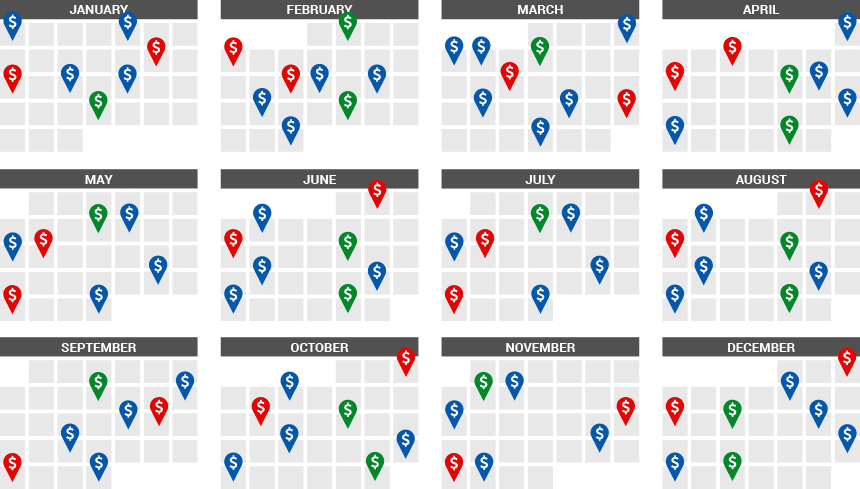Investors seeking a stable income stream often turn to dividend-paying stocks. These investments not only offer the potential for capital appreciation but also provide a regular payout of earnings. One valuable tool that can contribute to an investor’s stability and assist him with upcoming stock dividends is the dividend stock calendar.

Understanding dividend calendars:
A dividend stock calendar is a financial tool that provides investors with information about the scheduled dividend payments of publicly traded companies. Stock dividends calendar usually includes company information, ex-dividend dates, record and payment dates, dividend amount, and yield.
Investors use dividend calendar stocks for several purposes:
- Income Planning. Investors who rely on dividends for income use stocks dividends dates to plan their cash flows.
- Investment Strategy. Dividend calendars help investors arrange their stock purchases strategically to maximize dividend income.
- Portfolio Diversification. Investors use the information to diversify their portfolios by investing in stocks with different ex-dividend dates.
- Performance Tracking. They can track a company’s historical dividend payments to assess its financial stability and commitment to shareholders.
Benefits of using a dividend date calendar:
Using dividend calendars can offer several significant benefits to investors, particularly those who focus on income-generating investments like dividend-paying stocks.
- Firstly, they help reduce anxiety. Market volatility is a source of anxiety for many investors. However, dividend calendars provide a degree of financial stability. Investors can count on their dividends regardless of short-term market fluctuations. This assurance reduces stress during turbulent times.
- Secondly, they enhance investment discipline. Traders often face the temptation to react emotionally to market fluctuations. A dividend calendar instills discipline by focusing on the long-term income stream rather than short-term market movements. This discipline is an essential component of a successful investment strategy.
- Thirdly, they optimize tax planning. Knowing when dividends will be received assists in tax planning. Investors can aim to take advantage of tax strategies such as qualified dividend rates or offsetting gains and losses more efficiently.
Of course, dividend calendars are not without their risks. For example, a company could cut or eliminate its dividend if it experiences financial problems. But in an ever-changing financial landscape where stability is a sought-after quality for investors, it is quite necessary.
Dividend calendars provide this stability by offering a predictable income stream, aiding in portfolio planning, reducing anxiety, facilitating long-term planning, supporting diversification, tracking performance, and enhancing investment discipline.